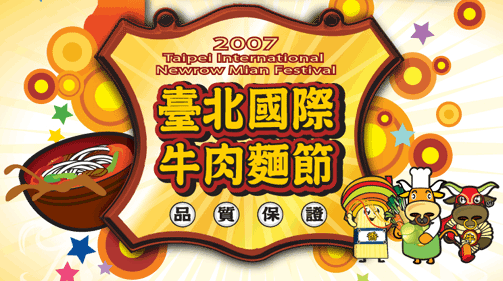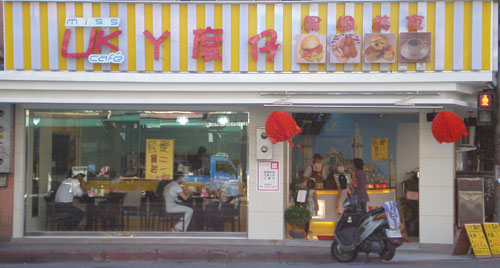In addition to skewering Tongyong Pinyin in his latest column, Johnny Neihu reports on a new Web site from the Taipei City Government with bizarre romanization and completely crappy English.
However, it hasn’t taken long for things [in Taipei’s English-language environment] to start deteriorating — 11 months to be precise. Mayor Hau Lung-bin (郝龍斌) has already begun to make his mark, if the English moniker of the metropolis’ most recent culinary fiesta is anything to go by.
I am talking about Taipei’s “Newrow Mian” Festival, which, for those ignorant of Mayor Hau’s personal Romanization system, means beef noodles. “Newrow”? It sounds more like the sort of French-accented Mandarin you would expect from a badly congested Inspector Clouseau if they ever made The Pink Panther in Beijing. But then what can you expect from a mayor with a master’s degree in food science?
Any laowai getting into a cab and asking for a lift to the nearest “newrow” store will no doubt be greeted with a look more vacant than that of Hau at a council meeting.
My guess is that the city government brokered some sort of deal on purchasing livestock for the festival with “La New” of shoes fame. The city got the right to use La New’s dodgy transliteration of the Mandarin word for cow, and so the carcasses were split, with the shoe company getting the leather and the noodle festival getting the beef, so to speak.
But the title of the noodle extravaganza was not the only questionable translation circulating last week. One of the festival’s contests was named the “International Teamwork Intercourse Competition.” What that has to do with beef noodles is anyone’s guess, but I bet the tickets sold pretty fast.
The Web site was set up to promote a “festival” for one of Taipei’s standard foods: niúròumiàn (beef noodle soup / 牛肉麵).
This is yet another example of Taiwan trying to promote its English-language environment by using machine-generated Chinglish, and by coming up with Anglicizations that don’t work as romanizations of Mandarin and mean nothing to local Mandarin speakers. Although the sound of the English word “row” is not too far from that of the Mandarin ròu, “new” for niú is a much bigger stretch. In fact, “new” is probably closer to nǚ (女), meaning female, which would give us a female flesh festival (nǚ ròu jié). Maybe the organizers could work in that International Teamwork Intercourse Competition after all. Now that would likely be a successful tourist draw, albeit the wrong sort.
This gives me an excuse to toss in something for lagniappe: niúròu chǎng (牛肉場), which literally means “beef area” but which is actually a slang term for a place with strippers — a place to see “meat” on display. (Compare this with English, in which “beefcake” refers to men, not women.) Even within the not-so-high-class world of strip joints, niurou chang are relatively low class.
According to the 2005 Mandarin-language article linked to below, niurou chang began in Taiwan in 1984. The article also provides an etymolgy, though perhaps an invented one.
Biǎoyǎn de nèiróng dōu gēn niúròu wúguān, wèihé jiào niúròu chǎng?
Yuánlái niúròu de Táiyǔ jiù zuò “yǒu ròu,” suǒyǐ lù “ròu,” mài ròu de suǒzài jiù jiào “niúròu chǎng.” Zhèige bù mài ròu què jiào “niúròu chǎng de sèqíng chǎngsuǒ.”
This states that such places were originally called in Taiwanese “have meat,” which sounds like “reveal flesh.” Perhaps Taffy, A-giâu, or someone else who knows Taiwanese can comment.
Just in case the Taipei City Government should develop a sense of shame and fix the English on this Web site (ha!), click on the image for a screen shot of the first page of the English site.

sources:
- 2007 Newrow Mian Festival Web site, in Mandarin, English, and Japanese
- NEWS WATCH: What’s your beef with intercourse?, Taipei Times, November 10, 2007
- “yǒu ròu” lù ròu, niúròu chǎng qǔzì Táiyǔ xiéyīn (「有肉」露肉,牛肉場取自台語諧音), ET Today, April 5, 2005

